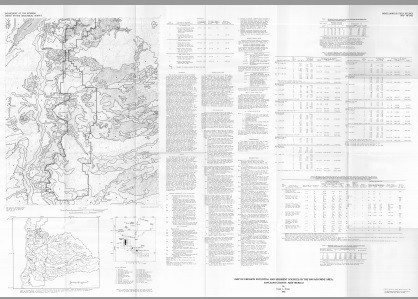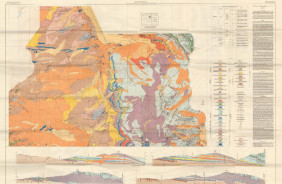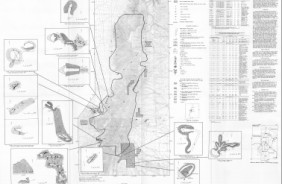
Product Details
- Product Number
- 30755
- Series
- MF-1432
- Scale
- 1:50,000
- Alternate ID
- GMF1432D
- ISBN
- 978-0-607-81091-2
- Authors
- WEIDE, D. L.
- Version Date
- 01/01/1982
- Regions
- NM
- Countries
- USA
- Media
- Paper
- Format
- Flat
- Digital Reproduction
- Yes
Additional Details
- Description
-
Map of erosion potential and sediment sources in the Navajo Mine area, San Juan County, New Mexico
Miscellaneous Field Studies Map 1432
By: David L. Weide
https://doi.org/10.3133/mf1432
Abstract
This map shows estimated erosion and sediment yields of an area designated for extensive surface mining, in San Juan County, New Mexico. The results of this study are important for the planning of future mining operations and will aid in developing suitable reclamation procedures. In addition, these data will serve as a base line from which a long-term program for determining rates of erosion and deposition could be developed. Such measurements are essential to understanding the impact of surface mining on geomorphic processes affected by extraction of resources form arid lands. The area chosen for the study lies within for 7-1/2-minute quadrangles (The Hogback South, Kirtland SW, Newcomb NE, and The Pillar NW) in the northwest San Juan Basin (figs. 1,2). The area includes five drainage basins covering approximately 200 mi2 (520 km2) that flow west into the Chaco River (fig. 1). Approximately 41 mi2 (106 km2) of this area is scheduled for surface mining during the next several years as part of the southern extension of the Navajo Mine.
- Survey Date
- 1982
- Print Date
- 1982
- Height In Inches
- 34.100
- Length In Inches
- 48.930
- Boundary Type
- Quadrangle
- Two Sided
- No
- Pieces
- 1
- Languages
- English





